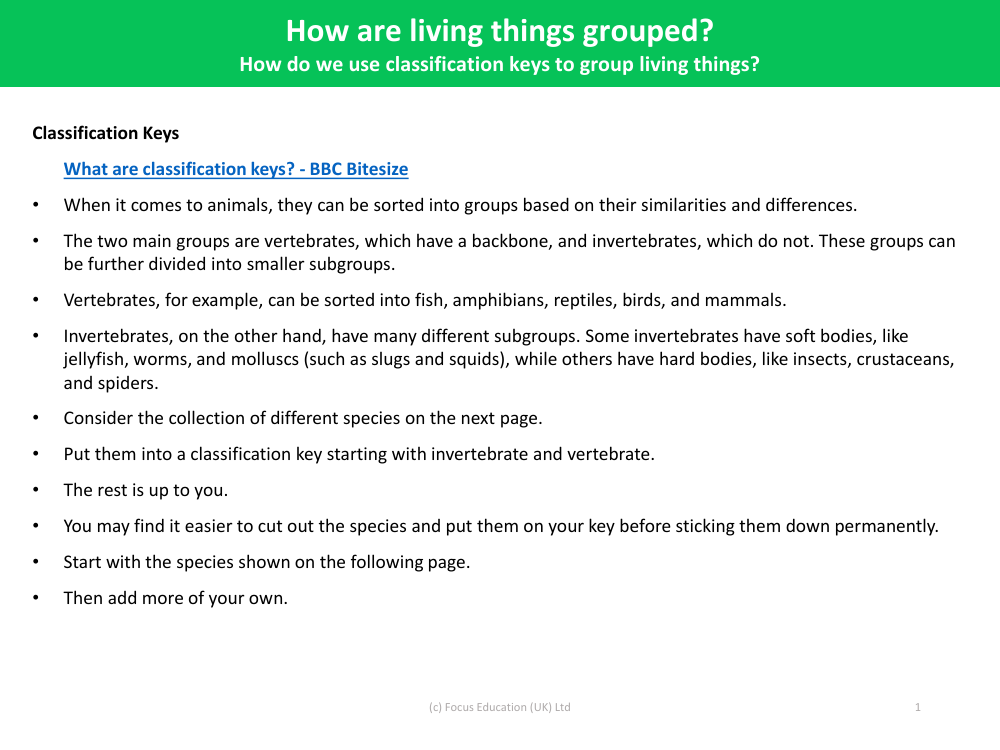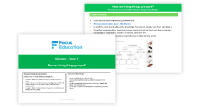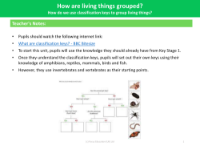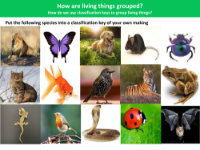Classification Keys - Grouping Living Things - Year 4

Science Resource Description
Classification keys are essential tools in the study of biology, particularly when it comes to organising living things into systematic groups. These keys help us sort animals based on their shared characteristics and distinct differences. For Year 4 students, understanding classification keys begins with recognising the broadest categories: vertebrates and invertebrates. Vertebrates are animals with backbones, such as fish, amphibians, reptiles, birds, and mammals. Each of these categories can be further divided based on more specific traits, such as the ability to live on land or in water, the presence of fur or feathers, and methods of reproduction.
Invertebrates, which lack a backbone, are incredibly diverse and are grouped into various subcategories. Some invertebrates, like jellyfish, worms, and molluscs, have soft bodies, while others, including insects, crustaceans, and spiders, have hard exoskeletons. To create a classification key, students are encouraged to start by distinguishing between vertebrates and invertebrates. They can then proceed to sort a given collection of species, using these two groups as a starting point. The task can be made interactive by cutting out pictures of different species and arranging them on a key before securing them in place. This hands-on approach not only helps students learn how to classify animals but also encourages them to explore and add more species to their classification keys, deepening their understanding of the diversity of life.



